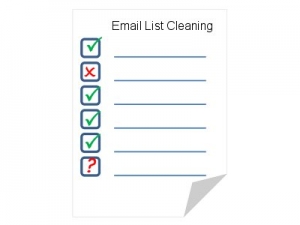 Email marketing works only with a clean and responsive list. While obsolete and incorrect information damages click through and conversion rates, fake and automatic sign-ups affect the possibility of success just as much if not more. In order to combat this insidious problem, businesses and individuals must put email address verification techniques in action.
Email marketing works only with a clean and responsive list. While obsolete and incorrect information damages click through and conversion rates, fake and automatic sign-ups affect the possibility of success just as much if not more. In order to combat this insidious problem, businesses and individuals must put email address verification techniques in action.
Why Verify Email Address Sign-ups?
The more bad data you have in your newsletter database, the fewer emails will get to real people who want what you have to offer. Spam bots automatically fill out the sign-up forms all the time online and clutter up email lists. While it is possible to check email address data after you get bounce reports and other analytics, preventing them from getting on your list at all makes more sense.
3 Suspicious Clues to Check Manually
For small businesses and individuals who do not have a lot of email sign-ups to their membership site or newsletter every day, a visual check of the data on the forms can help verify an email address.
1 – Unrealistic Form Information
While there is a vast array of first and last names and addresses in the world, some spam bots or automatic sign-up programs have trouble creating realistic ones. Highly unusual names, streets, cities, and states or countries that do not match, and phone numbers consisting of repeated or unused digits, like Hollywood’s 555, should be flagged for deletion or further examination.
2 – Odd Email Addresses From Unknown Providers
Most real people create an email address based on a name, favorite thing, unique word, and sometimes numbers tacked on the end. If you look at a list of genuine ones, there will be a huge variation. However, a spam bots’ automatic email address creation system is much more likely to invent something no person would ever use, such as a random string of letters and numbers. Also, beware of junk email providers.
3 – Check the IP Addresses
Another way to check email information is to match the IP address used to sign up in the first place with the IP address who clicks the verification link in an email. For a real person, this will most likely be the same because they will sign up and then verify at one time from the same computer or mobile device. Automated programs will use multiple systems that each handle different aspects of the job at different times.
3 Email Address Verification Sign-up Methods to Consider
If you want to verify email address information, the best time to do it is for it enters your database at all. These five techniques use current or emerging technologies to clarify the opt-in the process and prevent automated programs from gaining access.
1 – CAPTCHA
Perhaps the most well-known anti-spam technique for email lists, CAPTCHA codes need a human touch to verify. The most basic of these includes a series of letters, words, or numbers that need to be typed into a field before the sign up can take place. For visually impaired individuals, they usually offer a sound file as well.
More advanced versions include a block of six or nine images and instructions to click on particular ones if they contain a unique element. For example, a CAPTCHA may tell you to click on all the pictures with a fish in it, but only four of the pictures have fish.
2 – Sign-ups Handled by Social Media Accounts
Many websites and programs are opting to join with the larger social media pages like Facebook and Google to use that login information for themselves. Because sites have much more stringent anti-spam methods, that security helps other sites boost affairs as well.
This method to verify email address information before sign-ups is also convenient to the consumer. They need to remember fewer username and password combinations.
3 – Mobile Phone Email Address Verification
The old method to check email address specifics by sending a link to that address and requiring a click through has received a modern boost with mobile technology. Now, instead of verifying through email, people signing up to a list need to verify by phone call or text.
This convenient way to make sure email addresses belonged to actual people represents one of the most secure methods for both the website and the person trying to sign up. However, it is not used extensively with newsletter sign-ups and basic membership sites. At this time, mobile authentication is mostly used by financial institutions and similar accounts.
In order to ensure ongoing success with an email list used for multiple marketing campaigns, newsletters, and general contact with customers or clients, proper email address verification must be a top priority. By weeding out suspicious data to begin with and using built in programs like CAPTCHA and automated mobile phone systems, you can keep your list as clean, active, and profitable as possible.


